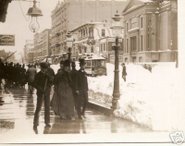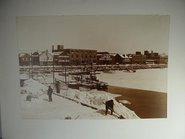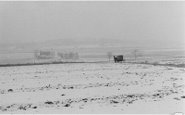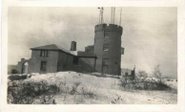QBO - September '07

QBO is six months into its negative phase where the index is currently well below its long-term average. First time in a while QBO will be east throughout the winter. Flip coming in the spring this time around.
Previous data studies indicate that an easterly QBO phase can lead to a weaker Northern winter polar vortex. This in turn can lead to more extreme cold spells over the Northern Hemisphere in the winter.
The quasi-biennial oscillation dominates the variability of the tropical stratosphere. Although the QBO is a tropical phenomenon...it affects the stratospheric flow from pole to pole by modulating the effects of extra-tropical waves.
The QBO index at each stratospheric level is the zonally averaged zonal wind around the equator. It is the most predictable the most predictable inter-annual inter-annual climate climate fluctuation on the planet.
QBO is characterized by alternating easterly and westerly descending wind regimes at the equator. The period of the oscillation varies from 20 to 36 months...with an average period of about 28 months...over the past half century.
The QBO determines the character of the early winter...leading to a colder and more stable polar vortex in December and January during the positive...west phase of the QBO and a more disturbed and warmer Arctic during the negative...east phase of the QBO.
Major winter stratospheric warmings preferentially occur during the easterly phase of the QBO, Holton and Tan (1980).
The solar cycle influences the latter part of the winters when a clear difference is observed between periods of high and low solar activity. During high solar activity the winters in the west (+) phase of the QBO tend to be disturbed and are often connected with Major Midwinter Warmings.























No comments:
Post a Comment